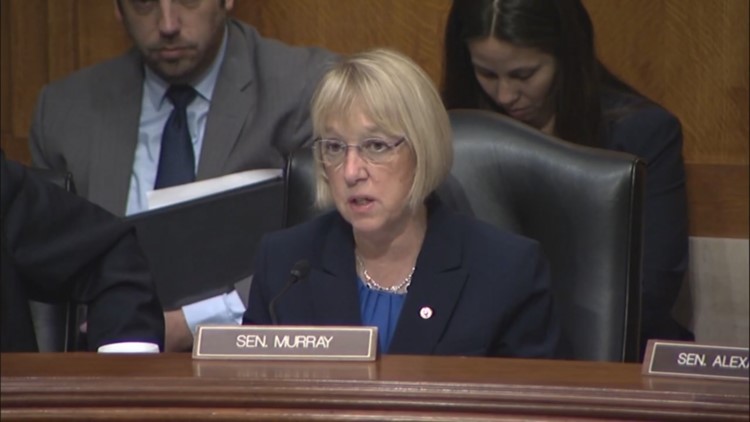It's rare to see bipartisan work in Congress these days, but lawmakers on both sides of the aisle are coming together to try and tackle the opioid epidemic.
A new bill, co-sponsored by Senator Patty Murray, D-Washington, passed a key Senate committee Tuesday, and could soon go to the floor for a vote.
“We approached this national challenge by listening to those on the front lines of the crisis,” said Senator Murray during the markup hearing. “We heard from families and experts, agency heads, state officials, Democrats and Republicans alike.”
The legislation titled the “Opioid Crisis Response Act of 2018” includes around 40 different proposals ranging from opioid packaging and guidance from the FDA to encouraging the development of non-addictive pain relievers and other strategies to prevent, treat and manage pain.
The bill also proposes to improve FDA and Customs Border Protection coordination at the border to help improve the ability to detect illegal drugs, such as fentanyl and would also focus federal funds on states and tribes that have been hit hardest by the opioid epidemic.
However, funding is not yet attached to the range of proposals. Lawmakers would still have to tackle that process during the appropriations process.
“Though this bill is wonderful; I applaud, my colleagues applaud its arrival,” said Dr. David Tauben, director of UW Medicine Pain Division. “Without funding the recommendations, the challenge will be how are we going to make it go from words to action.”
Dr. Tauben helped create opioid prescription guidelines for the state of Washington, a region that’s asserted itself as a leader on the topic. However, it’s a crisis decades in the making.
“Opiates have clearly been overprescribed since the late 1990s, a ten-fold increase in prescriptions and volumes of pills,” said Dr. Tauben. “There’s enough oxycodone out there to give every American a bottle of 32 and that includes children, as well.”
While Tauben says progress has been made in reducing opioid prescribing and overprescribing, he says the problem has been almost fully replaced by cheaper illicit drugs such as heroin and fentanyl.
“Though prescriptions are less, the number of people dying of opiate overdoses tragically has not changed,” said Dr. Tauben.
Between opioid-related fatalities, healthcare costs, criminal justice and other related costs, it’s estimated the epidemic has cost Washington nearly $10 billion in economic impact, according to Senator Murray’s staffers.
A national average was not calculated, but several other hard-hit states were analyzed, including Pennsylvania where the cost of the opioid epidemic is estimated at nearly $54 billion. Massachusetts was estimated at nearly $24 billion.
“We’ve made progress in identifying the problem,” said Dr. Tauben who says the next and much harder step will be turning the various proposals into practical day-to-day action.
“That's going to take lots of work, we have lots of steps to go. We need resources, human and financial resources to be able to accomplish this successfully,” he continued.
Tauben also stressed the need to incentivize the federal health agencies to research non-opioid, non-drug therapies for managing pain, as well as reconsidering the labeling of the drug buprenorphine, identified as an effective tool in helping to treat opioid addiction.
Additionally, Dr. Tauben would like to see increased training for those who work in additional management, and increased collaboration between healthcare providers in urban and rural areas. It’s something he’s been able to achieve through telemedicine funded, currently, by a state grant.
“In my opinion, the most effective thing this bill can do is improve education, education to patients, to families and communities. And on the medical side, education to physicians, nurses, and other health professionals involved in prescribing these drugs,” he said.



